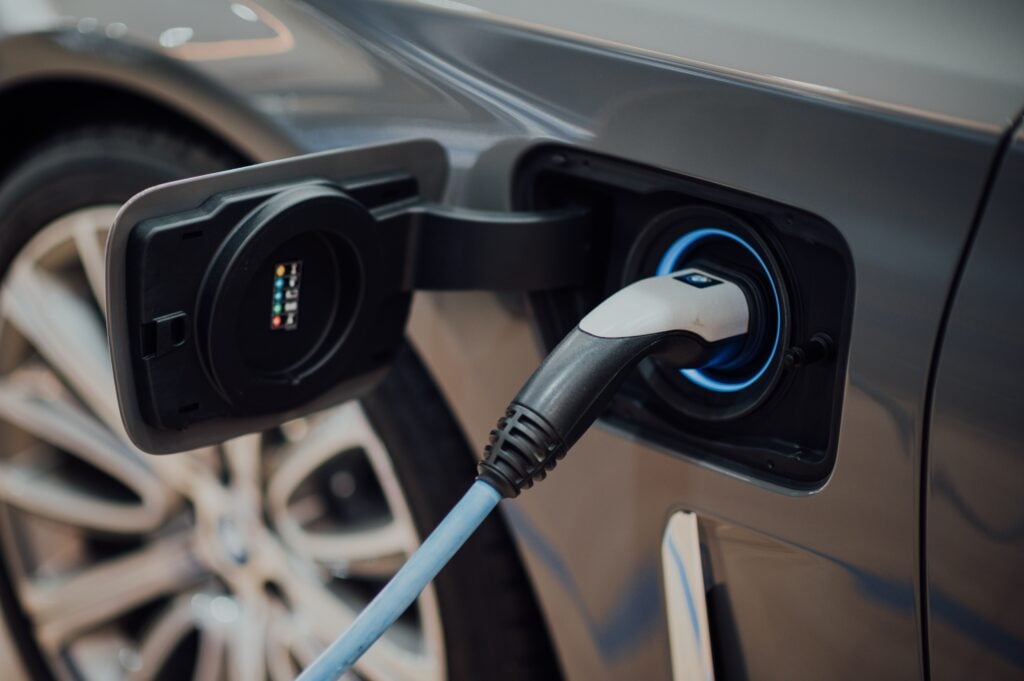In its list of high priority initiatives, just released, Infrastructure Australia has again included EV recharging stations on the national highway.
It also calls for policy and regulation (for standards) to support EV uptake (see the full statement below).
National policies and regulation to complement the roll-out of fast-charging infrastructure would reduce the risk of competing standards and redundant investments and maximise inter-operability.
Infrastructure Australia
For two decades we have known Australia must transition to EVs and that standards for chargers and for vehicle emissions would be needed. A Standards Australia working group was set up in 2010 to establish EV standards with no result.
Australian supplier of EV charging stations, EVSE, says it makes sense to have uniform charging standards and that should be Type 2. However, perhaps the horse has bolted. There are now 6 types of plugs in use and some suit only some models. See here to explain.
The Federal Chamber of Automotive Industries stepped up to the plate and its member companies have agreed to follow these standards for vehicles and public charging infrastructure, saying:
Certainty in charging standards within Australia would enable vehicle manufacturers and EV charging infrastructure providers to make investment in future EV-related product plans with reduced risk and encourage government to develop programs to incentivise uptake of EVs.
So, having done nothing but bucket EVs and produce a do-nothing strategy earlier this month, the Prime Minister is promising investment from the $74.5m Future Fuels Package, into hydrogen refuelling infrastructure where it’s needed.
Here’s what’s wrong with that, at least for passenger vehicles.
- There are no hydrogen fuel cell vehicles currently available for sale in Australia.
- Hydrogen-powered cars are even more expensive than EVs and ‘likely to remain a niche market for the foreseeable future’
- Worldwide, the uptake is understandably slow. China has ~7,000 hydrogen powered cars and 4 million EVs and plug-ins, California has less than 10,000 hydrogen cars and 500,000 EVs
- There is currently no public refuelling infrastructure for hydrogen in Australia
- Hydrogen fuel cell fuelled cars require 2-3 times more energy to drive the same distance as an EV because energy is lost in the process of producing hydrogen then converting it back to electricity. This will always mean the fuel is much more expensive than battery power.
- Most hydrogen currently produced in Australia uses fossil fuel-generated electricity
It is true that hydrogen cars can be refuelled faster than EVs but the gap in this and in range is closing.
The Government does us no favours by trying to shut out electric vehicles under the guise of consumer ‘choice’. The transport sector is a big emitter of greenhouse gases and EVs will play a crucial role in their reduction.
At a time Australia is meant to be reducing its greenhouse emissions, the upward trend in transport sector emissions continues. The latest National Greenhouse Gas Inventory report released last week shows the transport sector emitted 102 million tonnes (Mt) of carbon dioxide equivalent (MtCO₂-e) in the 12 months to September 2019. This was 18.9% of Australia’s emissions.
Philip Laird, University of Wollongong
Here is what Infrastructure Australia says in its plan:
By 2040, electric vehicles (EVs) are projected to account for 70% to 100% of new vehicle sales and at least 30% of the vehicle fleet in Australia. According to the Electric Vehicle Council, more than 19,500 EVs have been sold in Australia since 2011. In 2019, sales increased by 200%, with over 6,700 EVs sold.
Moving from internal combustion engines to electric vehicle technology will result in nationally significant fuel and maintenance cost savings, and environmental benefits.
However, lack of access to charging stations has been identified by over half of motorists as a key barrier to the adoption of EVs. Although there has been an increase in charging stations since 2018, partly supplied by the private sector, the latest information from the Electric Vehicle Council suggests that Australia currently has less than 2,500 public charging stations, of which approximately 350 are fast charging. Other key barriers to the adoption of EVs include the currently high vehicle prices, model availability, and the distance over which they can travel on a single charge.
Establishing a network of fast-charging stations on, or in proximity to, the national highway will help to overcome the ‘access to charging facilities’ barrier and reduce consumer anxiety about EV range. It is expected that the distance vehicles can travel on a single charge will continue to improve with technological advancements, and that vehicle prices will reduce as production scale increases and the cost of batteries reduces.
National policies and regulation to complement the roll-out of fast-charging infrastructure would reduce the risk of competing standards and redundant investments and maximise inter-operability.
The initiative includes:
- developing a network of fast-charging stations on, or in proximity to, the national highway network to provide national connectivity
- developing policies and regulation to support charging technology adoption.
Complementary investment in network infrastructure may be required to ensure that the electricity generation and distribution network can provide reliable electricity supply for additional electric vehicle chargers.

